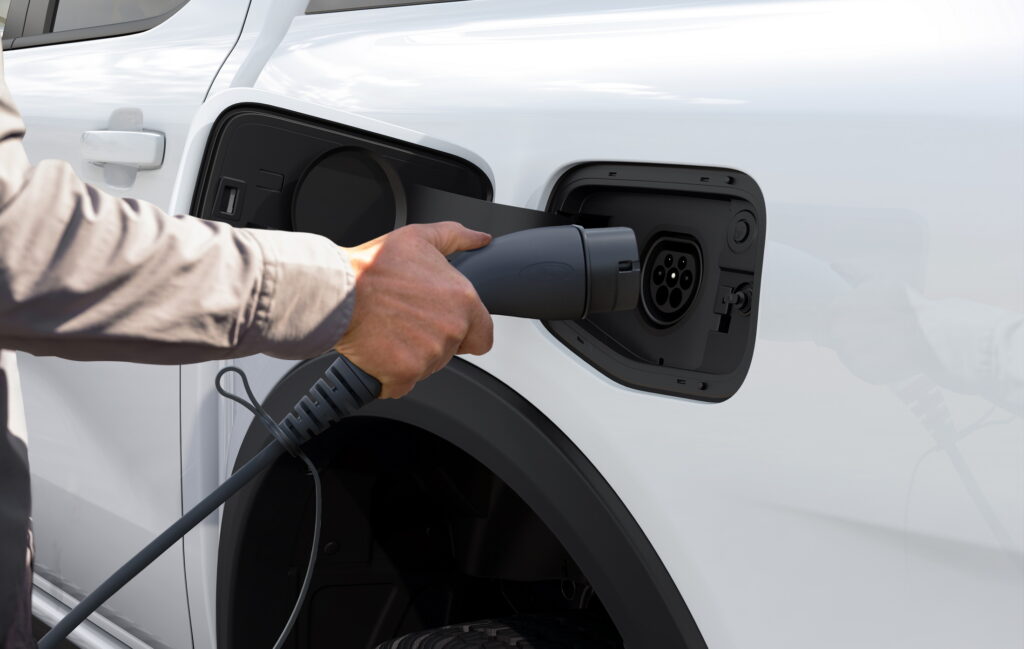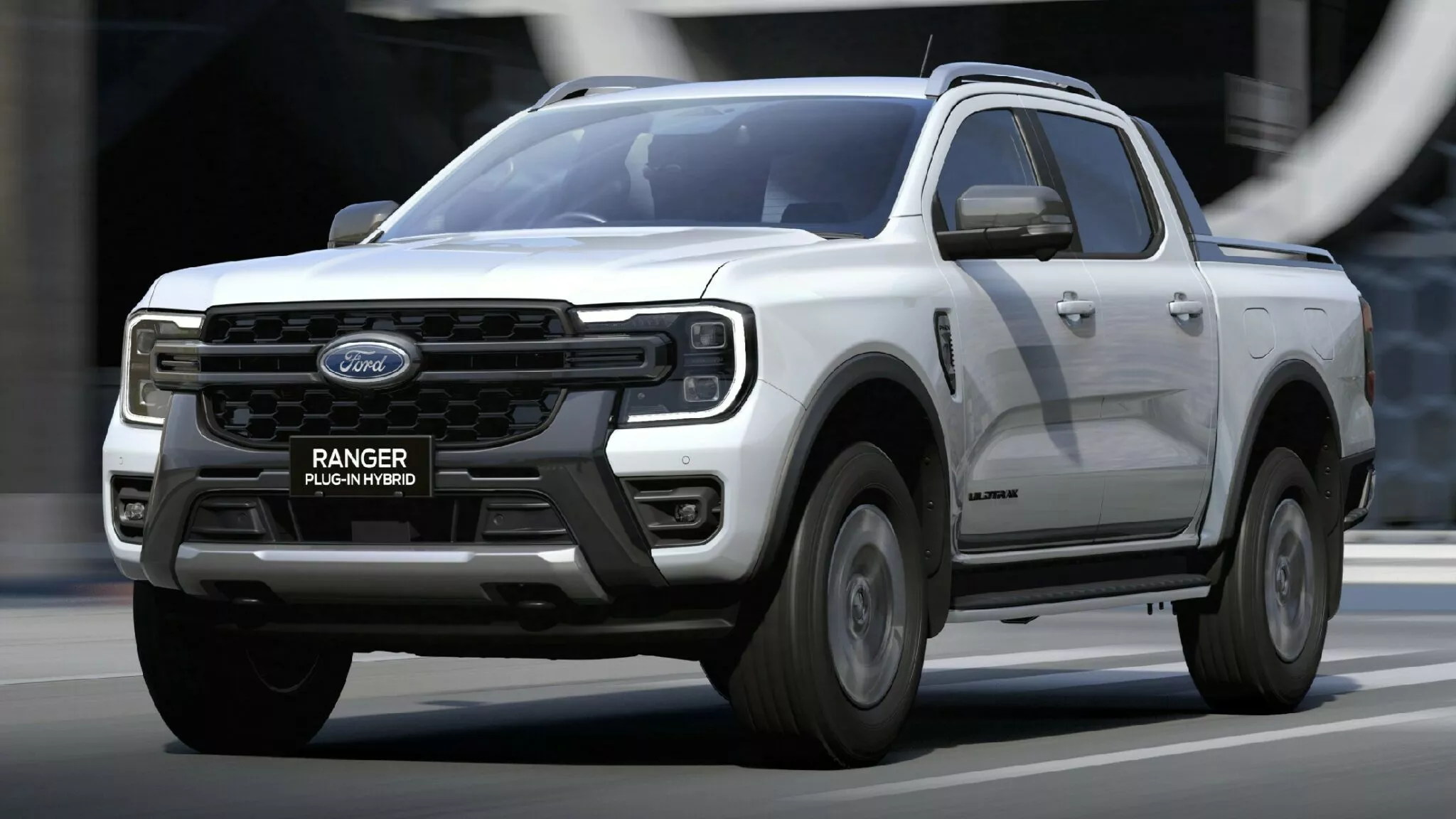Ford’s decision to introduce a plug-in hybrid version of the Ranger is a clear indication of the industry’s broader shift towards electrification.
Key Points
- The Ranger PHEV will have a zero-emission range of over 45 km (28 miles).
- It will retain the towing, payload, and off-road capabilities of the ICE-powered equivalent.
- The powertrain combines a turbocharged 2.3-litre EcoBoost four-cylinder engine with an electric motor and a battery of unknown capacity.
- Ford promises that the plug-in hybrid system will deliver “more torque than any other Ranger”, which means it will surpass the 600 Nm (443 lb-ft) of the 3.0-liter V6 turbodiesel.
- The targeted range of over 45 km (28 miles) is similar to the Kuga PHEV which uses a 14.4 kWh battery pack.
- The braked towing capability is the same as the ICE-powered Ranger at 3,500 kg (7,716 lbs).
- The Ranger PHEV will enter production in late 2024, with the first deliveries expected in early 2025.
- The model has been officially confirmed for Europe, Australia, and the UK, but additional markets could follow.
Ford Ranger PHEV
Here are some key takeaways.
1. Environmental and Practical Appeal: The Ranger PHEV promises a zero-emission range of over 28 miles. This means that for short commutes, it can function effectively as an electric vehicle, but it doesn’t tether drivers to the charging infrastructure for longer trips.
2. Performance and Power: Ford has hinted that the PHEV will have more torque and power than any other Ranger variant, leveraging both the electric motor and the EcoBoost engine to achieve these figures.
3. Battery Capacity: While the exact capacity of the battery remains undisclosed, drawing parallels with the Kuga PHEV suggests a battery of significant size, especially to cater to the demands of a heavier, less aerodynamic vehicle like the Ranger.
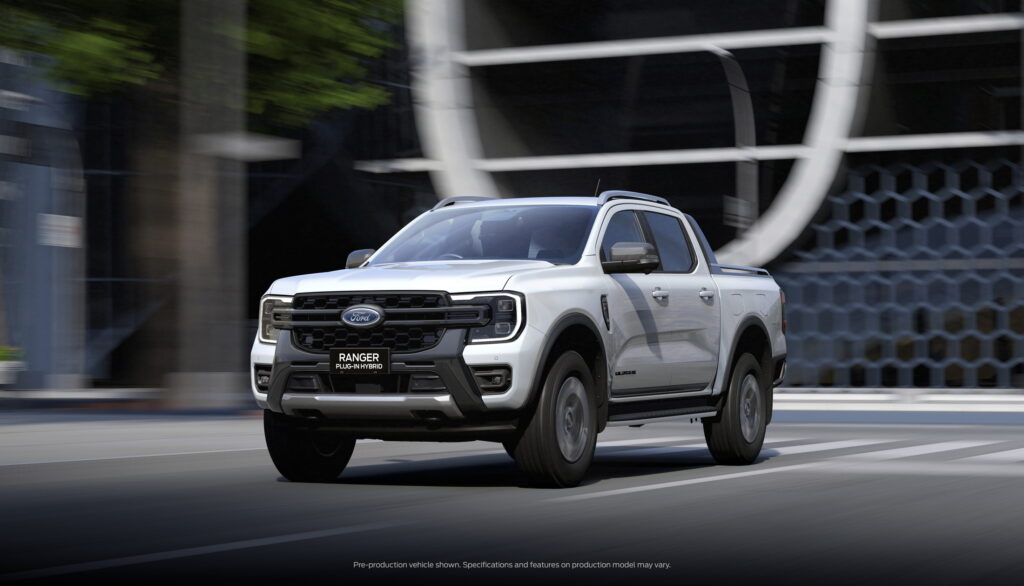
4. Towing and Utility: Maintaining towing capabilities similar to the ICE-powered Ranger shows Ford’s commitment to ensuring that users don’t have to compromise on the practical aspects of a pick-up truck for the sake of electrification.
Plug-in hybrid
5. Unique Features: The Pro Power Onboard system suggests an innovative approach, wherein the vehicle can double as a power source on worksites or campsites, potentially sidelining traditional generators.
6. Design Elements: Design tweaks like the charging port location, PHEV lettering, and new wheel designs will help differentiate the PHEV from other Ranger models. The digital cockpit is also expected to get updates relevant to the electric drive.
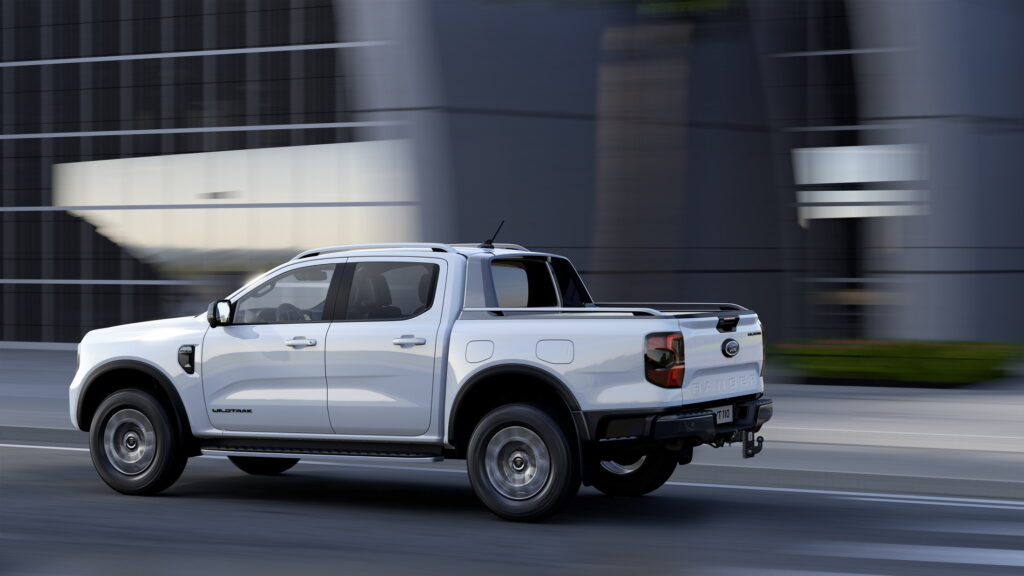
European market
7. Global Appeal: Ford’s comments about the model being geared towards global popularity, with a focus on the European market, suggest that the company sees significant potential for the Ranger PHEV in various regions.
8. Future Expansion: The mention of potentially expanding the powertrain offerings to include a fully electric model demonstrates Ford’s forward-looking strategy in the pick-up segment.
9. Potential for Cross-Platform Utilization: The concluding point about the potential of the plug-in hybrid powertrain being used in other vehicles, such as the VW Amarok twin, Ford Everest SUV, and Ford Bronco, showcases the modularity and scalability of Ford’s approach to electrification.
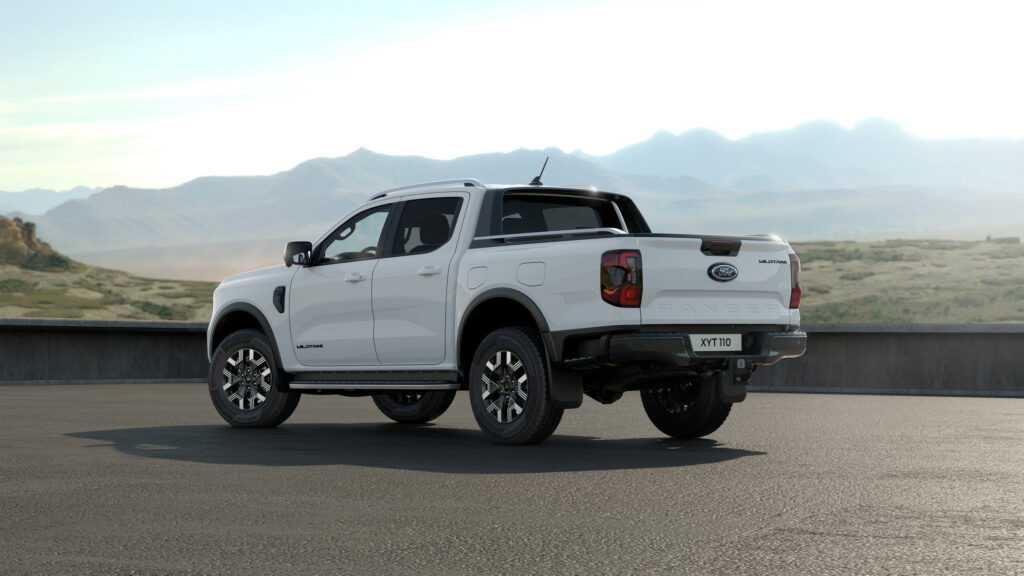
Some pros and cons of the 2025 Ford Ranger Plug-In Hybrid
Pros:
- Zero-emission range of over 45 km (28 miles)
- Retains the towing, payload, and off-road capabilities of the ICE-powered equivalent
- More torque than any other Ranger
- The targeted range is similar to the Kuga PHEV which uses a 14.4 kWh battery pack
- Braked towing capability is the same as the ICE-powered Ranger at 3,500 kg (7,716 lbs)
- Can use the electric motor to power tools and appliances on a worksite or remote campsite
Cons:
- The battery pack will likely add weight and reduce cargo space
- May be more expensive than the ICE-powered Ranger
- Requires access to a charging station to take advantage of the full benefits of the plug-in hybrid powertrain
Conclusion
Ford’s introduction of the Ranger PHEV is an exciting development for the truck market. Combining practical capabilities with the benefits of electrification, the Ranger PHEV is likely to appeal to a broad range of customers looking for a sustainable yet powerful vehicle option.
